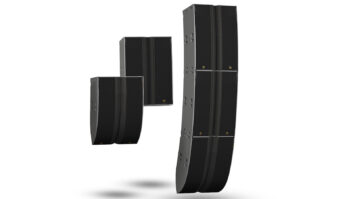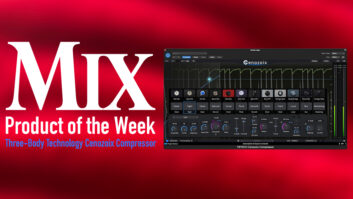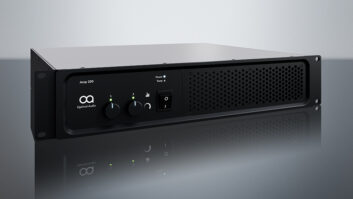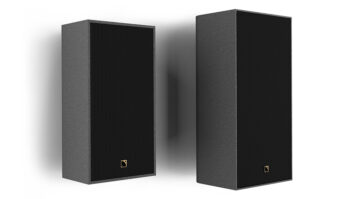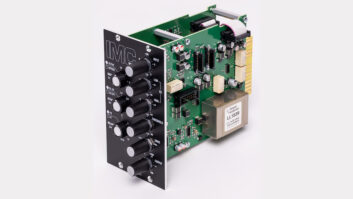

Twenty years ago, Euphonix made its public debut at an AES show with plans for Crescendo, its first console. The prototypes were rough, offering Macintosh, Atari(!) and PC-AT interfaces for viewing, editing and storing automation data. However, the Euphonix approach of combining a digitally controlled analog mixer with a central control area — where equalization, panning and aux sends could be manipulated without leaving the sweet spot — and onscreen displays of EQ curves was right on the money. In the years to come, the company’s fast, flexible mixing systems caught on with pro users, and Euphonix became a major player in the large-format mixer market with award-winning consoles for music, video/film post and broadcast production. Three years ago, Euphonix launched its MC (Media Controller) and System 5 MC, two high-end solutions for DAW mixing.
Now, Euphonix has expanded its offerings with an affordable Artist Series line of control surfaces that brings the precision and ergonomics of its MC systems to a wider audience. Unveiled at last month’s NAMM show, the new MC Control and MC Mix (pictured) are pro-quality mix controllers intended for use in smaller studios, project rooms, edit suites or portable applications.
Like the larger MC systems, the Artist Series units communicate via EuCon, the high-speed control protocol developed by Euphonix. MC Control and MC Mix easily interface with any Macintosh OS X-based media software, such as Ableton Live, Apple Logic Pro/Soundtrack Pro/Final Cut Pro, Digidesign Pro Tools (HD/LE/M-Powered), MOTU Digital Performer, Propellerhead Reason, Steinberg Cubase/Nuendo and other apps. In EuCon, control data for functions such as faders, mutes, knobs and displays is carried over Ethernet at 250 times the speed and eight times the resolution of MIDI. The HUI and Mackie control protocols are also supported.
HAVE IT YOUR WAY
The heart of the system, the MC Control ($1,499 street) combines an 800×480-pixel, customizable touchscreen that can display track names, metering (mono to full 5.1 surround), fader/pan settings, plug-in and EQ parameters, eight touch-sensitive rotary encoders, 12 assignable soft-keys, and dedicated controls for bank switching, track nudging, control room playback level, talkback, and application switching for multitasking between several programs or workstations running at once. There are four assignable 100mm Alps touch-sensitive moving faders with illuminated solo and mute buttons, as well as automation-arming and track-select keys for quickly creating master fader, submix or group faders.
A large jog/shuttle/data wheel allows parameter tweaking, horizontal/vertical track zooming, analog-style edit control and transport functions with lighted record/play/stop/rewind/fast-forward keys. The rear panel has a power socket for a supplied DC adapter, the Ethernet port for connecting to your network or computer, and a ¼-inch footswitch jack for hands-free record punch-in/outs. MC Control’s compact 20×9.5-inch footprint is ideal for desktop production or as a remote controller — placed atop a producer’s desk or synth or MIDI/USB keyboard.
Designed to be used with the MC Control or independently, the MC Mix ($999 street) adds eight additional moving faders and rotary encoders to the system. However, the unit adds a few tricks of its own, including high-resolution 128×64-pixel OLED displays over each fader, showing track number/name, metering, automation status and the parameter currently being modified. A Shift key can temporarily change the function of various controls, which adds transport control for using the MC Mix without the MC Control unit.
One of the system’s most attractive features is expandability. Multiple MC Mix units can be combined, or up to four MC Mixes can be added to an MC Control for as many as 36 faders. Removable end caps allow units to be bolted together, and all MCs ship with tilting riser brackets that slightly increase the height and viewing angle, allowing for the placement of a QWERTY keyboard in front of the MC or creating a compact layout with — for example — one MC Control/MC Mix combination in the front and three raised MC Mix units behind it. In addition, the modular nature of the Artist Series lets you start with a smaller configuration and expand the system as budgets — or production needs — allow.
As the system communicates over Ethernet, controllers can be placed anywhere on the network; if desired, an MC Control and MC Mix can reside in different physical locations. At the same time, the “network” can be quite simple, comprising little more than one — or several — Ethernet cables connecting the Mac to the MC unit(s).
COMING SOON
The MC Mix units begin shipping this month, with the MC Control coming later. “This is an exciting time for Euphonix as we launch the Artist Series line into the MI market segment, bringing our EuCon technology to an entirely new audience,” says company CEO Martin Kloiber. “The ‘connected studio’ has long been promised, but with the Artist Series we have developed controllers that functionally and ergonomically integrate into the personal studio. By working in partnership with Apple, Steinberg, Apogee and others, we are increasing the reach and power of the EuCon control protocol to deliver an unmatched level of connectivity between software and hardware control surfaces.”
For more information on the Artist Series, visit www.euphonix.com.

WATCH:
The video!



